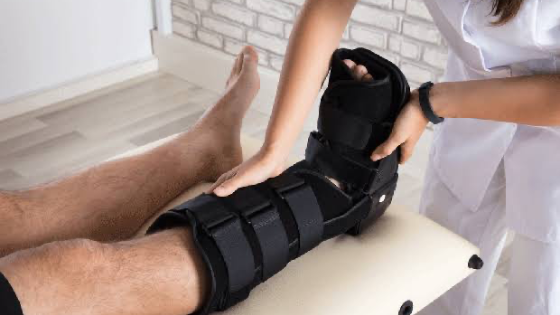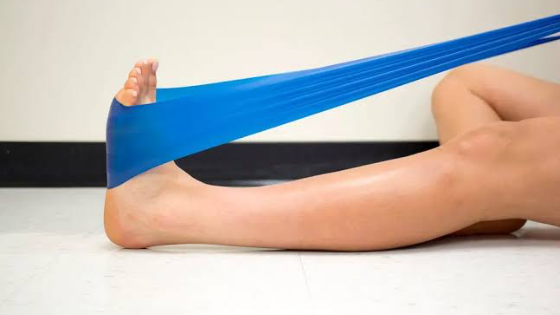Ankle sprains are common injuries that affect countless individuals of all ages and activity levels. Whether you’re an avid athlete or simply walking down the street, an awkward step or uneven surface can lead to a painful ankle twist. Understanding how ankle sprains happen. Who is prone to experiencing them. Recognising the signs and symptoms, and knowing the appropriate first aid and rehabilitation measures are essential for a speedy recovery. Read on to learn about ankle sprains: causes, treatment and rehabilitation.
Causes of Ankle Sprains
Ankle sprains occur when the ligaments surrounding the ankle joint are stretched beyond their normal range of motion. This can happen due to a variety of factors, such as stepping on an uneven surface, sudden changes in direction, or awkward landings after a jump. High-impact sports like basketball, soccer, and running are often associated with a higher risk of ankle sprains.
Risk Factors
While ankle sprains can happen to anyone, certain factors can increase the likelihood of experiencing one. These factors include previous ankle injuries, and inadequate warm-up before physical activity. Also weak ankle muscles, improper or poor footwear, and participating in activities with repetitive side-to-side movements.
Signs and Symptoms of an ankle sprain
The symptoms of an ankle sprain can range from mild to severe, depending on the extent of ligament damage. Common signs include pain, swelling, bruising, and difficulty bearing weight on the affected ankle. In more severe cases, there may be a popping or tearing sensation at the time of injury, indicating a possible ligament rupture or fracture of the foot or leg bones.
First Aid for Ankle Sprains
If you suspect you have sprained your ankle, it’s crucial to administer proper first aid immediately. The RICE (Rest, Ice, Compression, Elevation) method is the standard initial treatment for ankle sprains. Start by resting the injured ankle, applying ice wrapped in a cloth for 15-20 minutes every 2-3 hours for the first 24 to 72 hours. Using a compression bandage to control swelling, and elevating the foot above heart level to reduce inflammation.
The duration of immobilisation for an ankle sprain can vary depending on the severity of the injury. In general, mild to moderate ankle sprains may require immobilization for about 1 to 3 weeks. During this period, the injured ankle is usually kept stable and supported using a brace, splint, or walking boot.
For more severe ankle sprains, especially those involving torn ligaments or other complications, immobilisation may be necessary for a longer duration, typically ranging from 4 to 6 weeks or even more. The aim of immobilisation is to allow the injured ligaments to heal and prevent further strain on the affected joint during the initial stages of recovery.
While the ankle is immobilised, the muscles will begin to atrophy and the neural pathways will switch off. During this time it is important to maintain the neural pathways to the immobilised limb by performing the rehabilitation exercises on the good limb. This will speed up your recovery once mobile again.
Rehabilitation
Rehabilitation is a crucial aspect of ankle sprain recovery to restore strength, flexibility, and stability to the injured joint. Initially, it’s essential to avoid putting weight on the affected ankle and use crutches if necessary. As the healing progresses, gentle range-of-motion exercises can be introduced to improve mobility.
Gradually, weight-bearing exercises can be incorporated to strengthen the ankle muscles. Balance and stability exercises are also beneficial in preventing future sprains. Physical therapy under the guidance of a qualified myotherapist can significantly aid the rehabilitation process, ensuring a safe and effective recovery.
Prevention
While ankle sprains may be difficult to completely prevent, there are steps you can take to reduce your risk. Wearing appropriate footwear that provides ankle support, performing regular ankle-strengthening exercises, and warming up before physical activity are effective preventive measures. Additionally, being cautious on uneven terrain and avoiding risky movements during sports can also help minimize the risk of ankle sprains.
In conclusion, ankle sprains can be painful and disruptive, but with proper care and attention, most individuals can recover fully and return to their regular activities. Remember to seek medical attention if you suspect a severe injury, and don’t rush back into physical activity until you have fully rehabilitated your ankle. Taking the necessary precautions and practicing preventive measures can go a long way in reducing the risk of ankle sprains in the future. Stay safe, and take care of your ankles to keep yourself on the move without any hindrance.
ALM Remedial can provide treatment and rehabilitation for ankle sprains. Servicing the Yarra Valley, Lilydale, and Dandenong Ranges areas.




